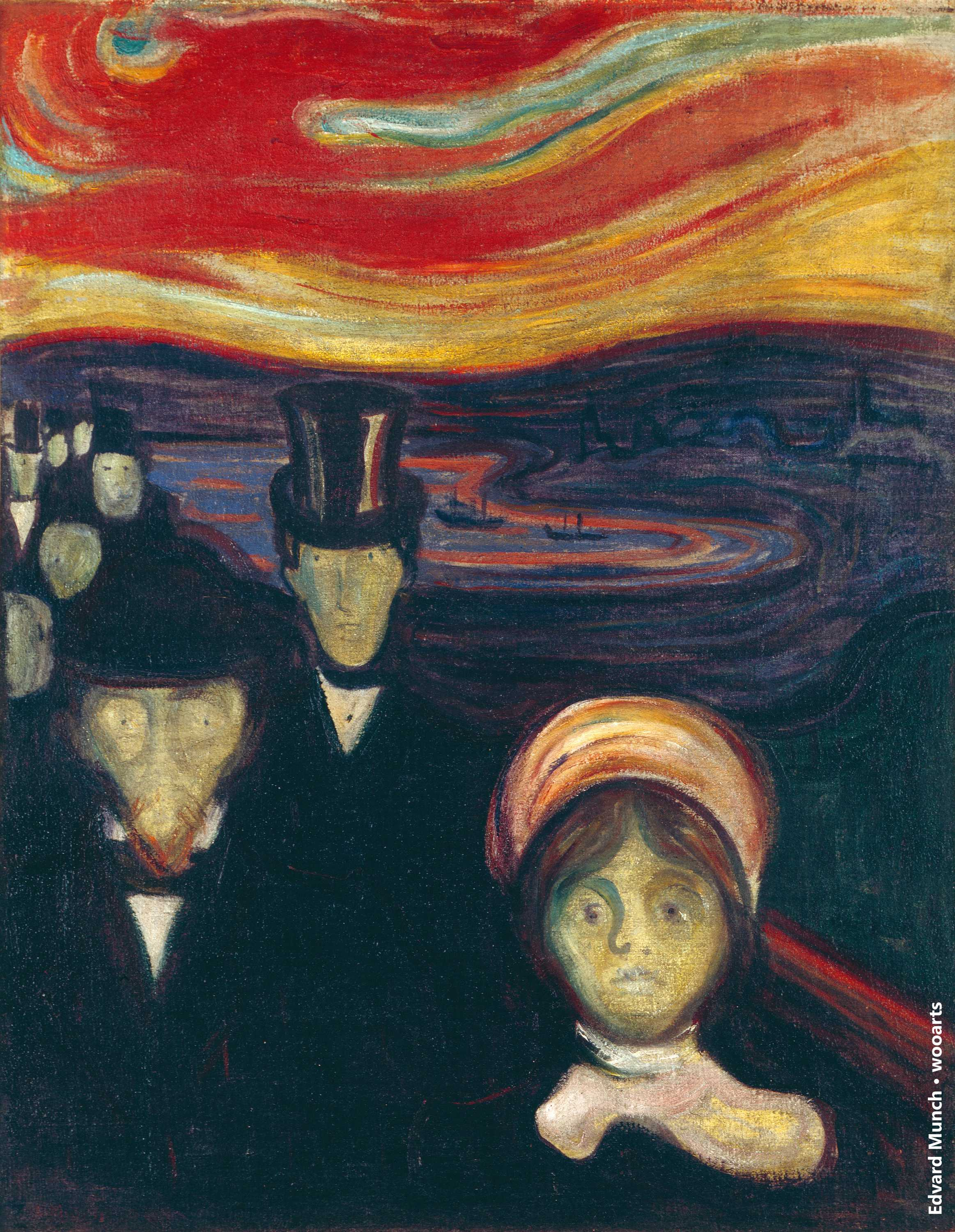Edvard Munch, the iconic Norwegian painter known for his expressionist works, has left an indelible mark on the art world with pieces that delve deep into the human psyche. His famous motif, “Two Human Beings (The Lonely Ones),” illustrates the complexity of human relationships against the backdrop of isolation and longing. This artwork, housed at the Harvard Art Museums, is part of a broader exploration in the current Munch art exhibition that examines his 40-year obsession with the theme of companionship amidst loneliness in art. Munch’s unique ability to portray emotions has made him one of the most revered modernist painters, whose works are still relevant today. By examining the nuances in Munch’s art, we can gain insights into how he rendered the depths of loneliness, yet also hints at connection, a vital theme in his body of work.
Edvard Munch’s oeuvre reveals a profound exploration of emotional landscapes, especially through his notable work titled “Two Human Beings (The Lonely Ones).” This piece reflects a recurring theme of isolation intertwined with human connection, making it a focal point in discussions about loneliness in art. The current spotlight on Munch at the Harvard Art Museums showcases the artist’s experimental approach over the decades, earning him recognition among modernist painters. Through various iterations of this theme, audiences are invited to reevaluate the depth of companionship that exists alongside isolation. Ultimately, Munch’s work invites viewers to navigate the intricacies of human emotion, blending both solitude and intimacy in striking visual narratives.
Understanding ‘Two Human Beings’ by Edvard Munch
Edvard Munch’s painting ‘Two Human Beings (The Lonely Ones)’ represents a poignant exploration of human relationships and isolation. Painted between 1906 and 1908, this work has captivated audiences with its depiction of two figures standing on a shore – side by side, yet profoundly alone. Munch’s repeated revisitations to this motif over a span of 40 years reveal his intense fascination with the complex emotions tied to companionship and solitude. The figures often appear disconnected, gazing toward the sea, which amplifies themes of loneliness in art that resonate deeply with contemporary viewers.
The recurring motif within ‘Two Human Beings’ enables a deeper analysis of interpersonal dynamics and emotional connections. Critics suggest that these figures may symbolize not just isolation, but also a shared experience within an expansive landscape. The fluidity of Munch’s technique showcases his evolution as an artist and modernist painter, transitioning from early compositions filled with meticulous detail to later iterations that appear more spontaneous and alive. This evolution suggests Munch’s journey in grappling with the human condition, transforming what initially seems like a straightforward image into a multifaceted dialogue on human experience.
Frequently Asked Questions
What is the significance of Edvard Munch’s ‘Two Human Beings’ motif?
Edvard Munch’s ‘Two Human Beings (The Lonely Ones)’ motif signifies the exploration of human connection and isolation, reflecting themes of loneliness in art. Over 40 years, Munch painted variations of this motif, utilizing different techniques and color schemes to depict the complex emotional experiences of the figures.
How does Munch’s artwork reflect feelings of loneliness?
Munch’s artwork, particularly ‘Two Human Beings (The Lonely Ones),’ reflects feelings of loneliness through the depiction of two figures standing together but facing away, suggesting emotional distance. This expression of solitude, even in companionship, allows viewers to experience the nuances of human emotions in Munch’s modernist approach.
Where can I view Edvard Munch’s ‘Two Human Beings’ in person?
You can view Edvard Munch’s ‘Two Human Beings (The Lonely Ones)’ at the Harvard Art Museums, which currently hosts the exhibition ‘Edvard Munch: Technically Speaking.’ This exhibition showcases multiple iterations of Munch’s work, demonstrating his impact on modernist painters and techniques in art.
What techniques did Edvard Munch use in his prints of ‘Two Human Beings’?
In his prints of ‘Two Human Beings,’ Edvard Munch employed innovative techniques, such as a jigsaw method, where he cut designs into separate blocks of wood for printing. This allowed him to create unique color combinations and variations, enhancing the motif’s complexity and reflecting his evolving artistic style.
How does the exhibition at Harvard Art Museums reinterpret Munch’s themes?
The exhibition at Harvard Art Museums reinterprets Munch’s themes by examining the relationship between isolation and connection in his works, particularly ‘Two Human Beings.’ It invites viewers to explore how Munch’s recurring motifs serve not only as expressions of his personal struggles but also as vehicles for artistic exploration and a deeper understanding of human experience.
| Key Points |
|---|
| Edvard Munch’s painting ‘Two Human Beings (The Lonely Ones)’ explores themes of loneliness and companionship. |
| Munch created numerous iterations of this motif over 40 years using various techniques and media. |
| The figures in the artwork are depicted standing side by side yet remain isolated, illustrating the complexity of emotional connections. |
| Munch used his experiences with printmaking to influence his painting techniques, creating dynamic visual effects. |
| The exhibition at Harvard Art Museums encourages a reevaluation of Munch’s themes beyond mere psychological interpretations. |
| Munch embraced imperfections in his work, often leaving areas of bare canvas to heighten emotional impact. |
| The exhibition ‘Edvard Munch: Technically Speaking’ showcases 70 works, allowing deeper insights into Munch’s artistic process. |
Summary
Edvard Munch is not just known for his iconic image of ‘The Scream’ but also for his profound exploration of complex human emotions in works like ‘Two Human Beings (The Lonely Ones).’ Over a remarkable period of 40 years, Munch revisited this haunting motif, revealing rich layers of interpretation from isolation to companionship through his evolving techniques and medium choices. This legacy invites viewers to not only appreciate Munch’s artistry but also to engage with the emotional landscapes he navigated throughout his life.
